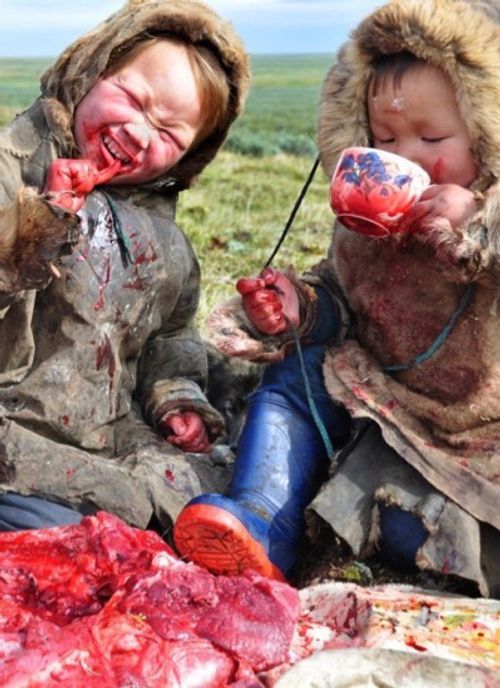How The Inuit Diet Keeps Them In Peak Human Condition
Dec 23, 2022 · 2 mins read
0
Share

Inuits, who live in the Arctic regions of Canada, Alaska, and Greenland, have a diet that is rich in protein and fat but low in carbohydrates. This is because the availability of fruits and vegetables is limited in their environment, so they rely on other sources of nutrition.
Save
Share
Some common sources of protein for Inuits include seal, caribou, fish, and whale, which are very often hunted using traditional and modern methods. These animals provide a variety of nutrients, including omega-3 fatty acids, which are important for brain and heart health.
Save
Share
Inuits also consume a lot of fat, which is an important source of energy (and insulation) in their cold environment. They get their fat from sources like blubber, lard, and bone marrow, as well as from the meat of the animals they hunt.
Save
Share
Despite their low intake of fruits and vegetables, Inuits still manage to get important nutrients from other sources. For example, they consume fermented foods like raw fish or seal, which provide probiotics that help support their gut health.
Save
Share
Inuits also get vitamins and minerals from eating organ meats, such as liver and kidney, which are rich in nutrients like iron, zinc, and vitamin A. The meat and organs of animals, in particular seals, also gives Inuits a strong source of vitamin C.
Save
Share
In addition to the nutrients mentioned above, Inuits also consume a variety of herbs and plants, which provide additional vitamins and minerals, particularly vitamin C and various antioxidants. This includes things like wild liquorice, as well as wild berries such as cranberries.
Save
Share
Inuits also use herbs and plants medicinally for a variety of things, such as arctic willow to fight colds & reduce inflammation, angelica to treat digestive issues & respiratory problems, and bearberry to treat things like UTIs and improve immune function, among others.
Save
Share
Despite the lack of fruits and vegetables in their diet, Inuits have low rates of chronic diseases like obesity, heart disease, and diabetes. This suggests that their diet is well-balanced and provides all the nutrients they need for good health.
Save
Share
Inuits have a unique and rich cultural history, and their traditional way of eating is an important part of that. While their diet may be different from what we are used to, it has allowed them to thrive in their environment for generations.
Save
Share
If you enjoyed this post, read some of my other posts about important cultural diets, such as how the ancient Roman diet helped them conquer the world:
Save
Share
0